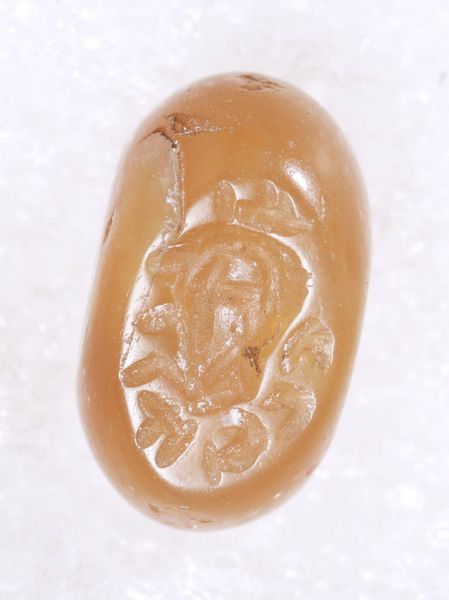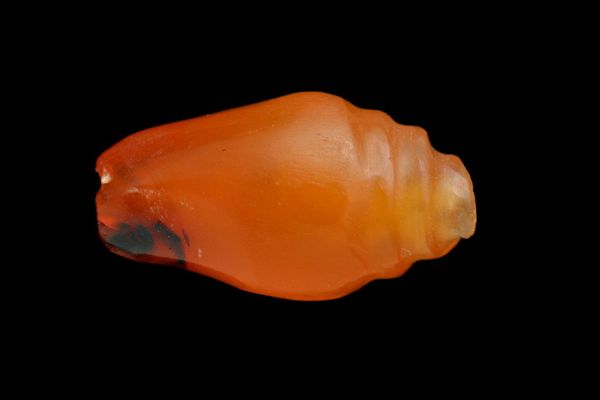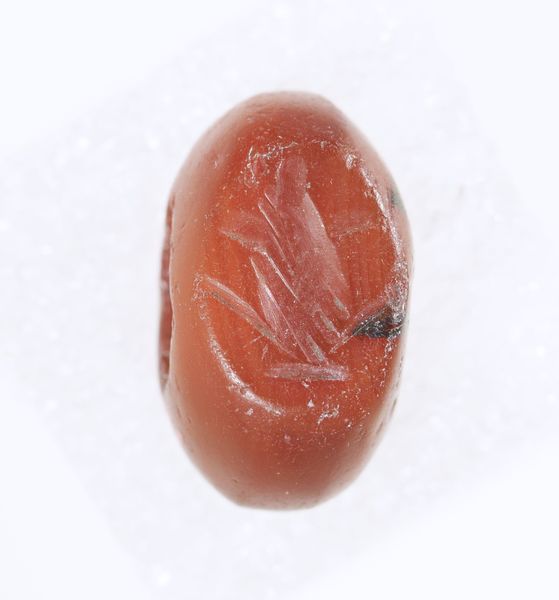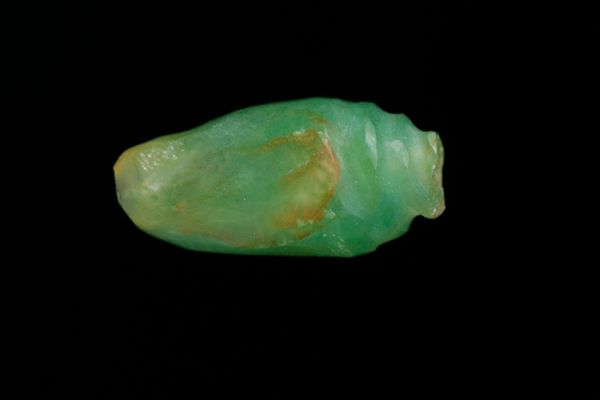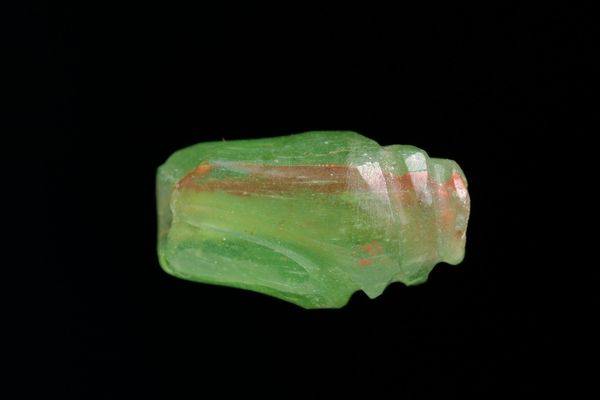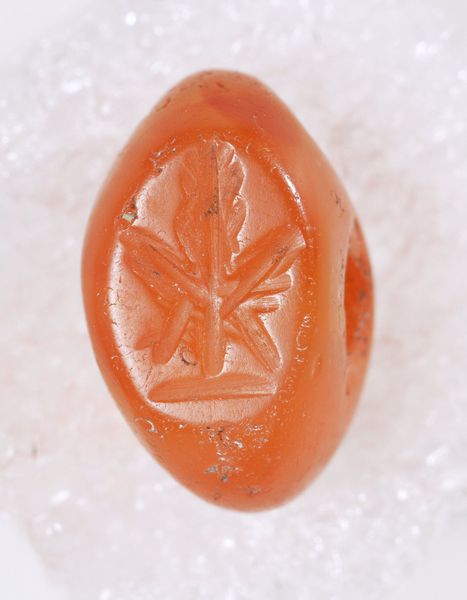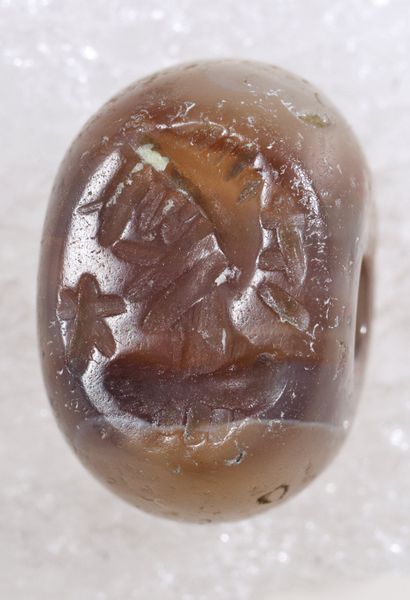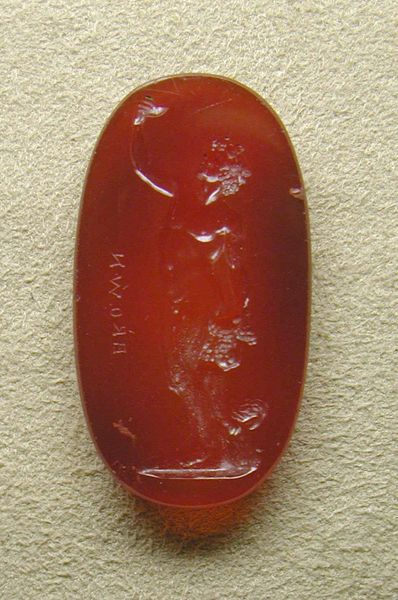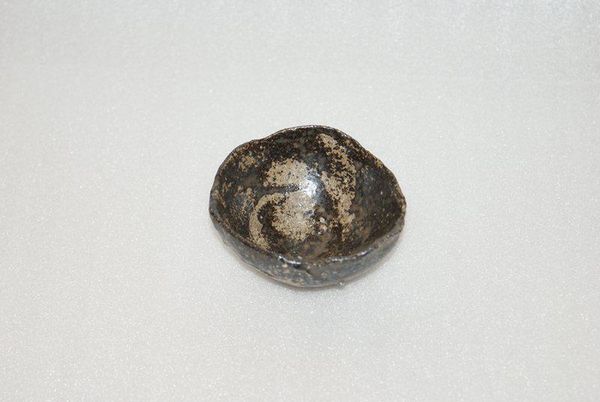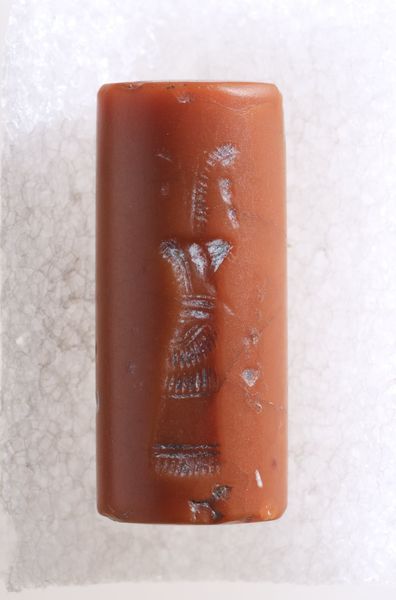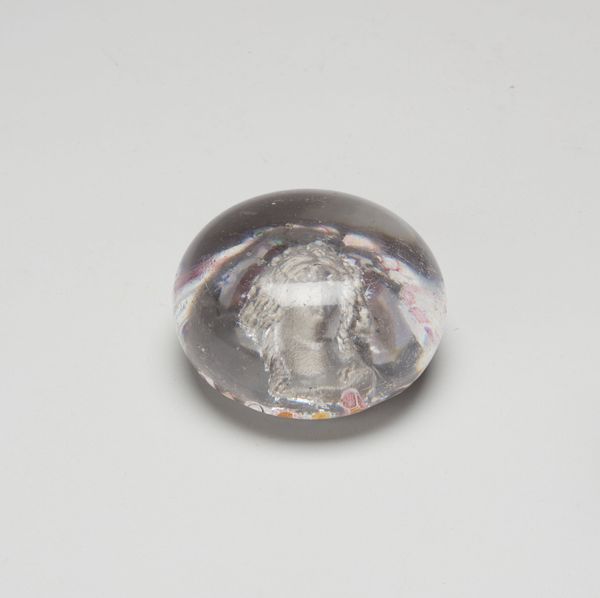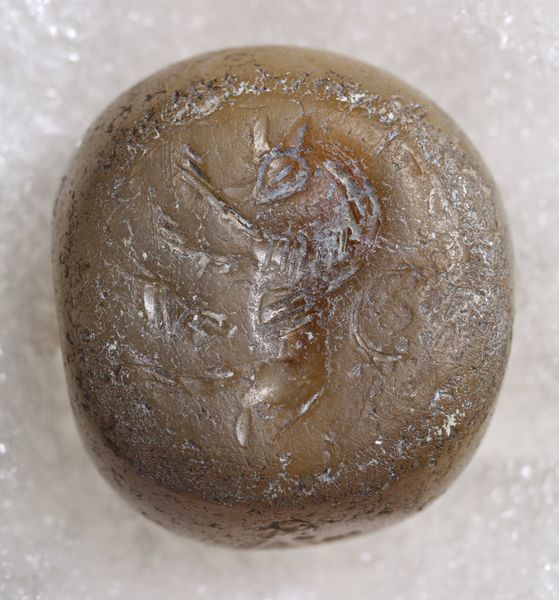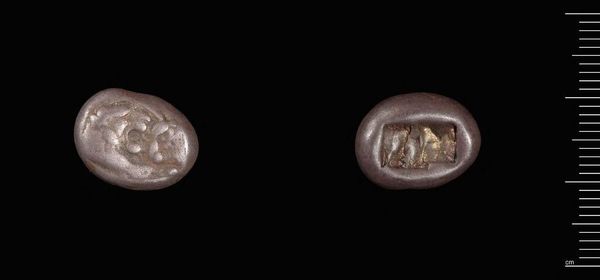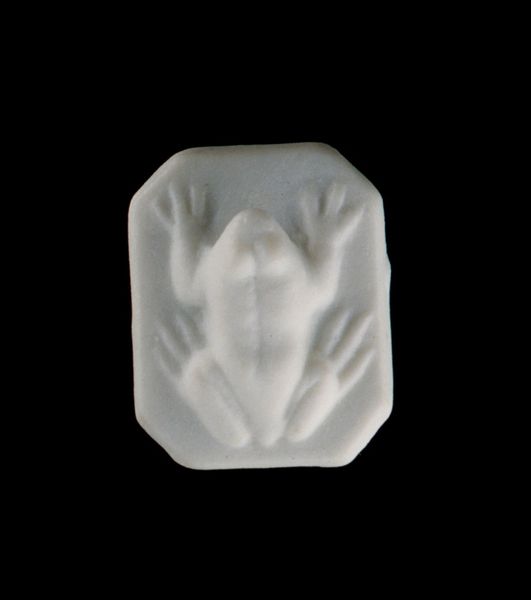
carving
#
portrait
#
carving
#
greek-and-roman-art
#
roman-art
#
ancient-mediterranean
Dimensions: L. 1.9 cm
Copyright: Public Domain
Curator: Here we have a Roman carnelian ring stone dating from the late 2nd century, now housed at the Metropolitan Museum of Art. It's attributed to the artist Aspasios. Editor: The stone glows with a deep, internal fire. I’m struck by the intimacy of it – so small, yet so intensely detailed. You can almost feel the labor that went into carving that portrait. Curator: Absolutely. And portraiture was such an important tool in the Roman Empire. Not only as markers of individual status, but as statements of belonging and power within Roman society. Think about the hands that touched this. Editor: That brings it to life. Carnelian itself carries so much weight—its association with protection and courage. This wasn’t just a pretty bauble; the choice of material signals deeper social intentions. Was carnelian easily available, or a rare imported gem at that period? This has strong implications for value and audience. Curator: The reddish hue no doubt contributed to that symbolism and implied power. But let's look at Aspasios, the artist—presumably a known name, trusted to portray likeness and project authority. Someone specific commissioned and wore it, so understanding the patron is as important as analyzing the craftsmanship. Editor: I see the slight imperfection on the top, evidence of use or damage, so each stone likely presents different working constraints. You begin with the raw material, and carve away using miniature tools that would wear down very fast, adjusting the design to suit the original contours, densities, and so forth. The person doing this knew the materials really well. Curator: Fascinating to consider the creative act against a background of power dynamics and individual agency. It reminds us that this wasn't just artistic production. Editor: I agree, and this little stone reminds us how intensely Roman life centered around image, object, and belief, with the role of material and labor as a testament to social values.
Comments
No comments
Be the first to comment and join the conversation on the ultimate creative platform.
